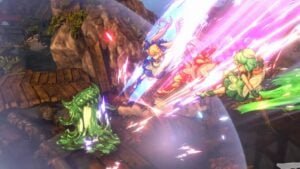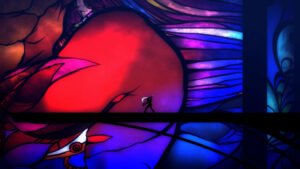In recent years, content creation has become less of a niche hobby and more of a common pastime. The amount of streamers, podcasters, and YouTubers has skyrocketed in recent years, but as most people do not monetize their content, budget is often a concern. Also, a concern for the novice is having hardware that can all talk to each other and the software that you use.
Imagine a company who specializes in making not only hardware for content creators, but professional filmmakers. Not only that, but they offer a free version of their post-production software that is used across the industry, providing editing, audio and colour grading at a price that literally cannot be beat.
The company is Blackmagic Design, makers of cameras, switchers, professional broadcasting and filmmaking equipment, and DaVinci Resolve. I had a chance to speak with their Director of Sales Operations, Bob Caniglia, about the recent uptick in content creation and how Blackmagic has been there to help along the way.
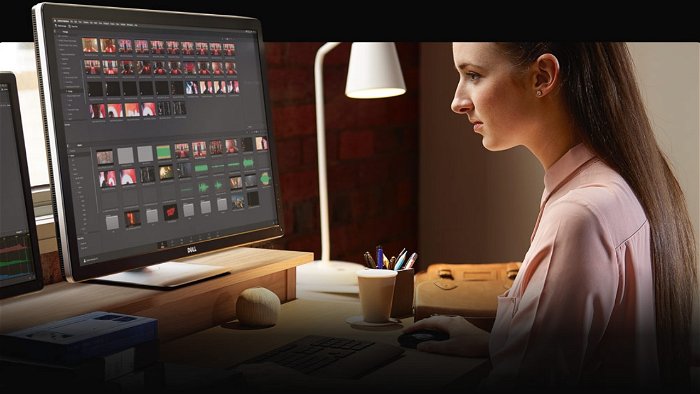
JOE FINDLAY: So, my first question for you is what was the motivation behind Blackmagic providing a free editing software like DaVinci Resolve?
BOB CANIGLIA: It goes back a long way. In 2009, Blackmagic bought DaVinci the company. I actually worked at DaVinci, at that time I was the youngest guy at DaVinci and became the oldest guy at Blackmagic overnight. I’m still living that one down. The funny thing is we went from three to five hundred-thousand-dollar turnkey systems to “here’s the software, it’s free”. Initially, Resolve was a colour grading software only. That’s what DaVinci was known for was for colour grading, in various ways over the years. But Resolve was the latest and greatest, and then we started to add some editing features because we round-tripped to a lot of other NLEs (Non-Linear Editors), so other companies like Avid and Adobe and Apple had their editing programs and because a lot of people were finishing in Resolve for colour, we had to round-trip between them, and as you add more and more features to make that round-trip seamless, you eventually have an editor.
So we started with the edit page, which allowed people to edit. Eventually, we came up with a cut page as a way to do sort of quick edits and get things out quickly. Then we added Fusion visual effects, we added Fairlight audio and the next thing you know we had a full-fledged non-linear editor with a suite of tools for editing, colour grading, visual effects, audio and then of course round-tripping which is also important because there was a time when certain software versions from certain companies couldn’t go from one to the other but if you went through Resolve you could get there, so it’s become quite a tool for that.

JOE: For the sake of the reader, can we just flush out what round-tripping is?
BOB: Sure. So sometimes you need to move from one program to another. If you were to use, say Adobe Premiere for editing, but you wanted to go to Resolve to do colour grading, we have a way to import the edit from Adobe, do the colour grading and then export it back so that Adobe could read what was done. Oftentimes, there are software versions of certain programs that don’t want to talk to each other. You put Resolve in the middle, and it’s able to speak both languages and get it back and forth.
So the reason there is a free version was to get people interested in using any of the tools that are available in Resolve, whether it was colour or whatnot. Editing became more robust over the last couple of years, and then we make cameras like Blackmagic cameras that use Blackmagic Raw which is our codec. It’s open source, so anyone can support it, but we obviously support it very well because it’s ours. It makes editing those files very easy in Resolve. A lot of people are used to using Resolve for their colour grading and then as we made these cameras people say ‘well why don’t we just start the edit in Resolve and see how that goes,’ and then the next thing you know, they’re hooked.
The free version was designed to teach Resolve to people that may or may not want to invest yet and also for Directors of Photography that can actually look at the footage and then if they want to make some suggestions, they can actually send that file what we call a DRP (DaVinci Resolve Project) to the colourist.
When you buy our Cinema cameras, you get the full version which is DaVinci Resolve Studio. The studio version has some more advanced features and can take advantage of multiple GPUs so if people have a really big, robust system they can use it. The only real limit to the free version is no 3D. So, if you’re doing stereoscopic work, you need the paid version. There are a couple other tools that are limited because they just need too much GPU power, and it also limits your output to Ultra HD. Now you could bring in files that are 8k, 12k, whatever and look at those, and you can output up to Ultra HD.
The cost of the (paid version of the) software has come down over the years. When it was first released, it was $995. It’s currently $295 and it comes with certain hardware that you can purchase.
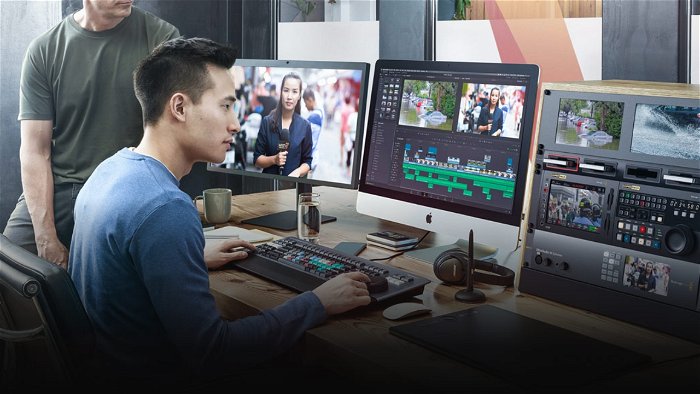
JOE: With everything that’s been going in the last couple of years, a lot more people are creating content in a lot of forms. Short forms like TikTok and YouTube Stories. A lot more YouTubers, a lot more streamers making highlight reels and whatnot out of their stream. How important do you think that having an option like DaVinci Resolve for those kinds of creators has been?
BOB: It has definitely been very helpful, because if somebody’s looking for the lowest priced non-linear editor, we have it. It really gets people started. We’ve also added tools to help people that are producing content. There are specific outputs, so you want to hit YouTube, you want to hit the different ones, they’re in the software, so it makes it easier for them to output rather than to try and figure out all the nomenclature of the correct codec and all these things that (beginners) probably don’t even really understand.
We also added some tools to help people frame for the right platform. (For example), Instagram goes vertically, so we actually have tools now that will automatically frame the person in the centre of it without having to do it manually. Of course, you always have the option to go back and tweak things manually, but these are tools that are helping people and that’s why the cut page was made, to help people just get in, get out and output straight from that page. We have a lot of customers that dabble in both sides of it, so they’re doing broadcast work, but then they also have to do stuff for the web, so they use it for both.
We’ve seen a huge uptake in the new broadcasters. Really, we’re all broadcasting now. That has really accelerated through the pandemic. It is exciting to see that, and we are cognizant of our tool range. Our tools are the same tools that everyone’s using, whether they’re colour grading, editing a movie that’s going to be Oscar-nominated or if they’re just trying to make someone laugh on TikTok.
JOE: Let’s talk a little bit more about equipment in general that Blackmagic offers for content creators specifically.
BOB: At Blackmagic, everything sort of plugs into each other, so I go out, and I shoot on one of our cameras which start at about $1295 for cinema up to our $7000 12k camera and a lot of different variants in between. Resolve itself has other hardware. We have a full edit controller, we have a smaller speed editor controller for people to use in conjunction with the software, and we have three different panels for colour grading. The large, advanced panel then we have a mini panel and a micro panel uh so that helps people use trackballs and things like that to enhance their colour. We have a lot of different IO devices to get in and out of computers.
The thing that has picked up a lot during the pandemic is our ATEM Mini Switchers. People are using the Atems to do Zoom calls and whatnot. I have six or seven cameras that I’m plugged into. The Atem switchers start at around $300, and we created it originally for people that were gaming that wanted to show themselves playing games live on YouTube or (Twitch), then we went into the pandemic and suddenly everybody needed to show more than one thing at a time, so you know not only do I have all those cameras plugged in I have the chroma key I also use, and my computer output, so I can go through take people through the website, or show them keynotes or PowerPoints or whatever I need to show. So, I have all those tools.
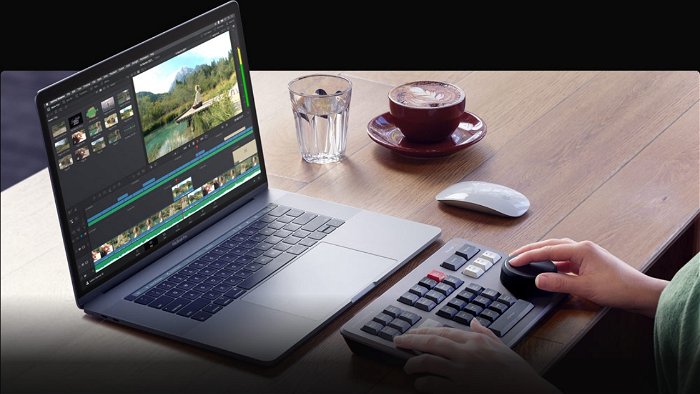
JOE: Going back to DaVinci for a minute, what is it an aspect of DaVinci Resolve that you think most content creators need to take more advantage of?
BOB: Setting looks is one of those ethereal type things. I could send the same raw footage to five different colourists, and I’ll get five different looks from it. We actually have filters that you can apply to get you in the ballpark. We have an effects’ library that you can go in and start playing and when you click on it, it’ll apply the grades, so you can kind of see where you’re going. I’m also a big believer in depth of field. That’s why my background is blurred, because if all the books behind me were in focus you’d spend most of your time trying to figure out what’s on my bookshelf. That’s not really the way the story is supposed to be told.
You can do that even if you shot it all, so it’s all in focus. You can diffuse and filter layers to blur them out. I think those are some of the subtle tools that actually go a long way to telling a better story.
JOE: A lot of third-party companies make a lot of plug-ins and templates that apply to DaVinci. Do you guys work with those third parties for sourcing and stuff like that and how does that process work?
BOB: We have a lot of different partners in Resolve from the plug-in and effects people. Either effects or output codecs, we work with a lot of those guys. We also work with all the camera manufacturers too. Even though we compete on the camera side, we also cooperate with the camera companies because they have their own special sauce that needs to work within Resolve. We cooperate with everybody, including the other NLE manufacturers to do better round-tripping because, at the end of the day, we’re all trying to make our customers happy and our customers sometimes have a hodgepodge of different cameras and workflows, and we’re just there to sort of assist with all that. So, Resolve has been very open to being inclusive of all those different companies.
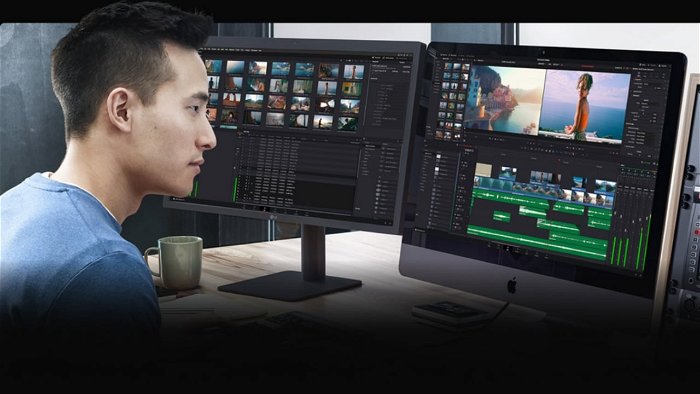
JOE: Now if we throw price out the door, what do you say is the top advantage of DaVinci over any other NLE?
BOB: I think it’s the robustness of the tools and the fact that we have some premier brands. Fairlight Audio was at one point the signature audio tool and now that it’s included in Resolve, I think it’s a big deal. DaVinci colour has always been our flagship product. We’re not a subscription-based model, which I think is also helpful. If you bought a license in 2010 at our first NAB, you’re still getting free upgrades and I think that goes a long way. I think that’s pretty impressive, even if I didn’t work here.
JOE: How do you develop your hardware and software to talk to each other in a way that a Sony couldn’t talk to Final Cut or Canon couldn’t talk to Avid?
BOB: One of the things that I think is unique for Blackmagic, because it’s not always the case at other places, is that all the teams work together here. So, the user interface team works across all the products, not just the Resolve product. That allows the guys that actually build the tools that do the job work on that. I’ve worked on products my whole life, and I’ve worked on the same company’s two different models. You would think they were built by two different companies. We’re very good at that, and it’s because the teams don’t have to make appointments to talk to the other teams.
We definitely attack different problems or look for better solutions as a whole team. That helps everybody. When you’re moving up the product line or coming down size-wise, you’re going to have the same tools and that is important. It’s not something to be overlooked. We do that in addition to having to incorporate products from other companies and doing those types of things, especially in Resolve, makes it the Swiss army knife of post-production.
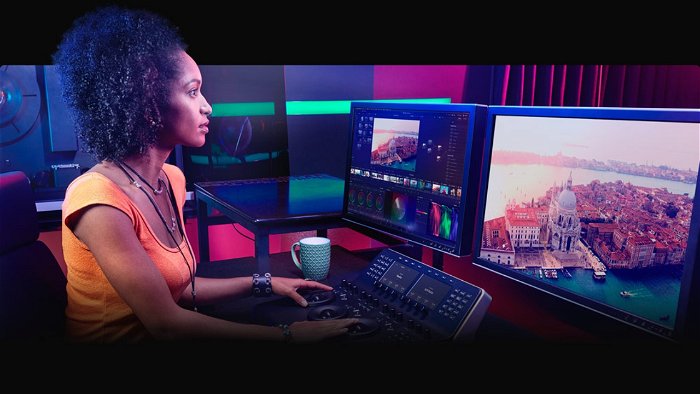
JOE: I love that description by the way. Is there anything in the future of Blackmagic that we can talk about at this moment or some things in development?
BOB: We never talk about the future, but I will say this. We’re a month away from NAB and I envision that we will have something to say about something between now and then or after. The thing that I find the coolest about all this is that we’re constantly innovating. We’re constantly doing upgrades. I tell people to follow us on Twitter (@blackmagic_news) because we only use that really to mention software updates or upcoming product launches or things like that. That, I think, is something to pay attention to. We never talk about the future, but it’s coming.


